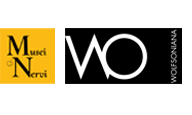
Click here to view image
Prism idol
Mitchell Wolfson Jr. 2007 Genova - donazione
Ferruccio Ferrazzi (Roma, 1891-1978)
painting
GX1993.473
Unità di misura: cm; Altezza: 159; Larghezza: 93
olio su tavola
"For me it is the doll I saw with Depero in the amazement of an evening in Milan, in a hairdresser's shop window [...]. For me it is this nervous prismaticism of our age that lives again rigid, perfidious and firm in that girl [...]".
This is how Ferruccio Ferrazzi recalled in 1931 the suggestive vision that had inspired Idol of the Prism, his most famous work, considered one of the masterpieces of Magic Realism, a pictorial current of the Italian 20th century characterised by restless atmospheres of suspension. By placing the prism motif - often recurring in his pictorial research - at the centre of the composition, Ferrazzi elaborated, in the concise simultaneity of this work, a balanced expressive dialectic between stylistic and iconographic references to the Renaissance tradition and references to Boccioni's aesthetics and the mechanics of mannequins by Depero, who in 1917 painted a watercolour on the same subject.
In portraying this disturbing and enigmatic androgynous figure, traversed - in the alienating reversal of perspective cuts - by the dynamic reflections of mirrors, Ferrazzi adopted the fundamental stylistic tensions of the variegated Novecento culture, developing a personal process of synthesis between his modern aesthetic sensibility and the direct references to classical tradition, then prevalent in the international climate of the “return to order”. In particular, the Roman artist took up the tendency to blur the realist structure of the pictorial composition in the perceptive indeterminacy of an alienating and ambiguous representation: a visual oxymoron frequent in the Magic Realism current. The canvas depicts a semi-naked androgynous woman surrounded by mirrors and holding a glass prism in her right hand.




